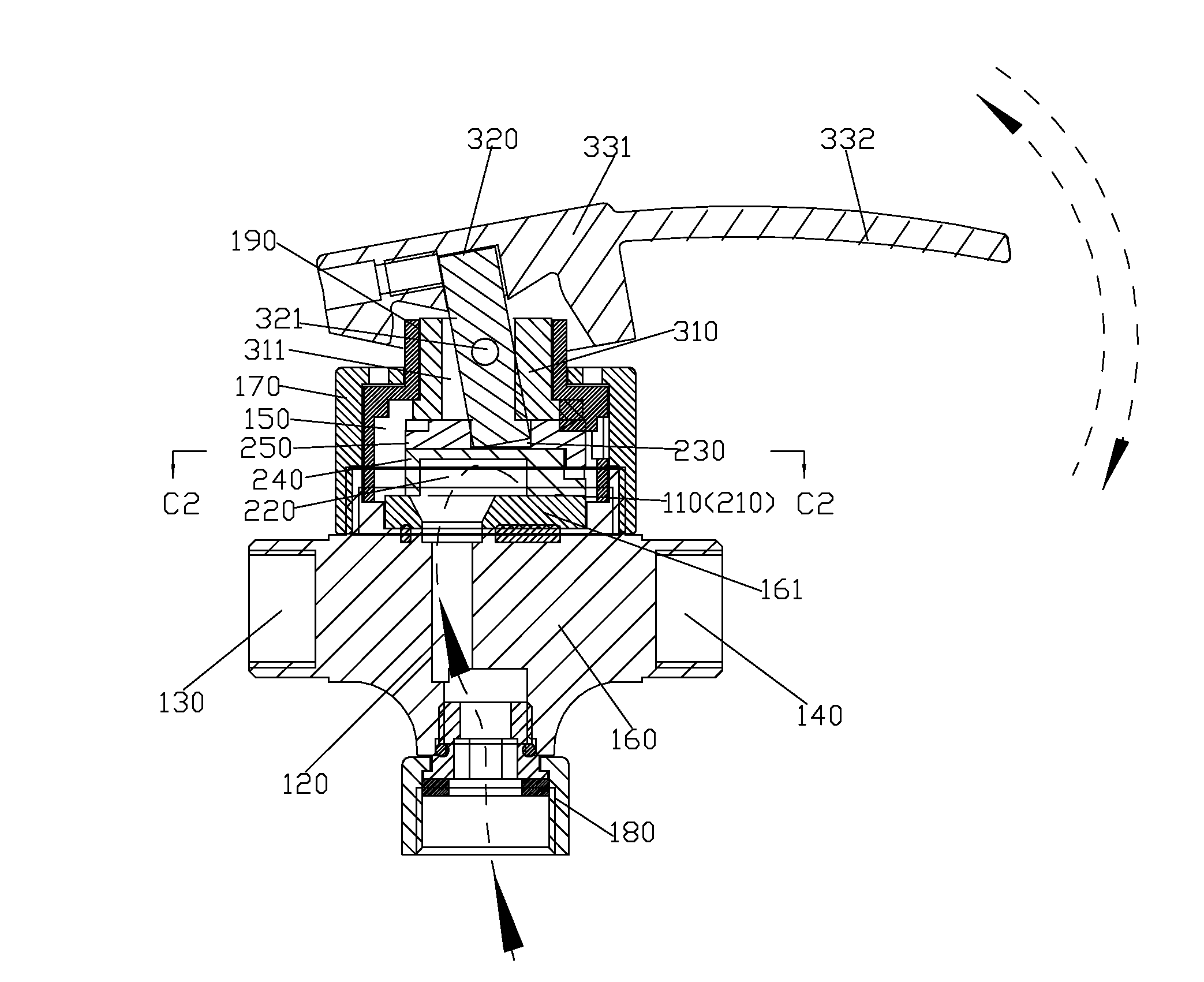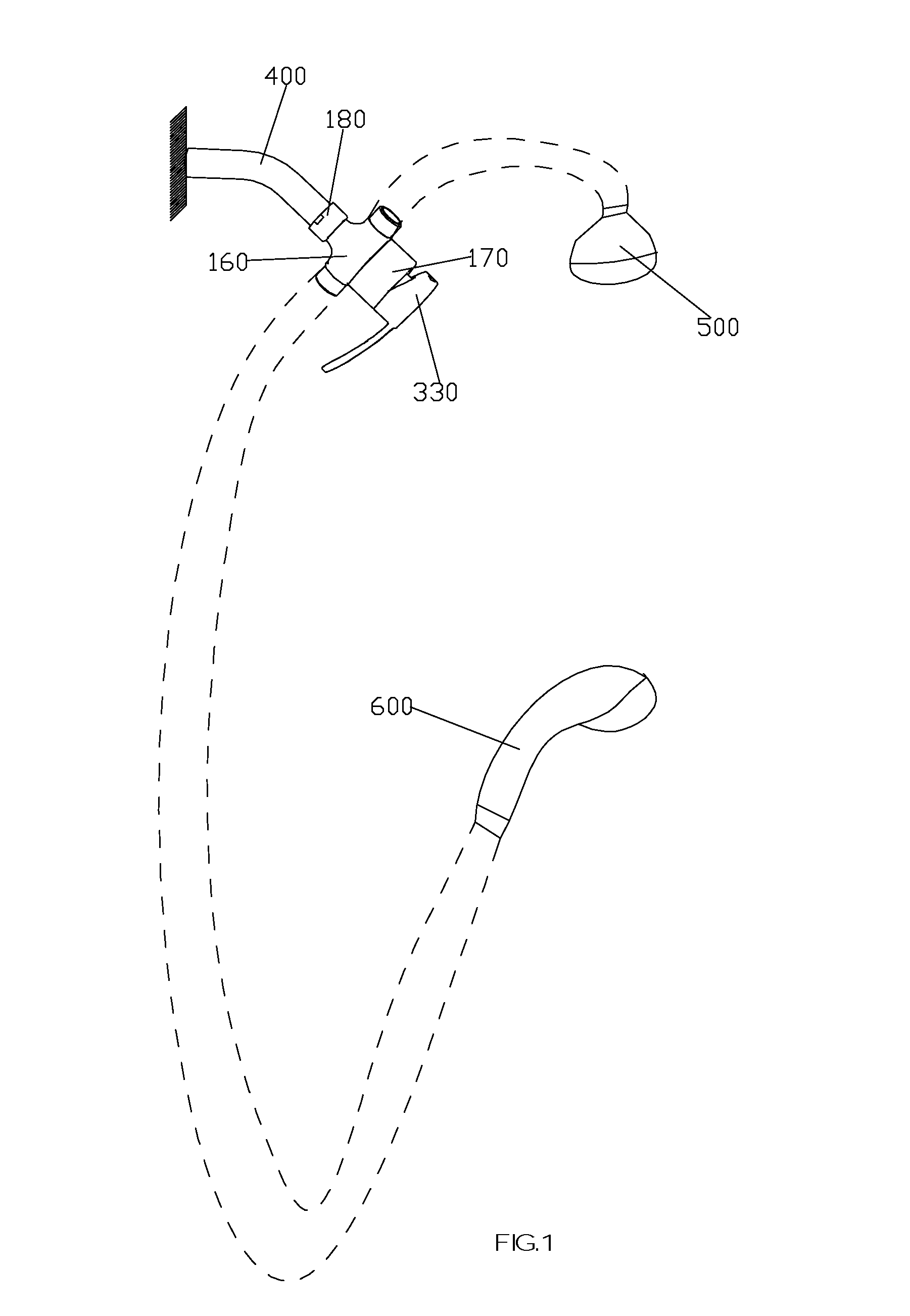Valve for switching waterways and adjusting flow
- Summary
- Abstract
- Description
- Claims
- Application Information
AI Technical Summary
Benefits of technology
Problems solved by technology
Method used
Image
Examples
Embodiment Construction
[0044]According to FIG. 1 to FIG. 14, the valve for switching waterways and adjusting flow, comprises a fixed seat 100, a control piece 200 and an operation mechanism 300.
[0045]The fixed seat 300 comprises a body 160, a gland nut 170, a connector 180 and a fixed shell 190.
[0046]The top surface of the body 160 is concavely arranged to be a groove, and a stator 161 is fixed on the bottom surface of the groove, and the top surface of the stator 161 is defined as a fixed face 110, and a first inlet hole and two first outlet holes arranged in the stator 161 in an against and penetrating manner. And it is better that a gasket 162 is arranged between the stator 161 and the bottom surface of the groove. A second inlet hole and two second outlet holes are arranged in the body 160. And the stator 161 is mounted in the groove of the body 160, so that: the first inlet hole is communicated with the second inlet hole to generate the inlet waterway 120, and the inlet port 121 of the inlet waterway...
PUM
 Login to View More
Login to View More Abstract
Description
Claims
Application Information
 Login to View More
Login to View More - R&D
- Intellectual Property
- Life Sciences
- Materials
- Tech Scout
- Unparalleled Data Quality
- Higher Quality Content
- 60% Fewer Hallucinations
Browse by: Latest US Patents, China's latest patents, Technical Efficacy Thesaurus, Application Domain, Technology Topic, Popular Technical Reports.
© 2025 PatSnap. All rights reserved.Legal|Privacy policy|Modern Slavery Act Transparency Statement|Sitemap|About US| Contact US: help@patsnap.com



